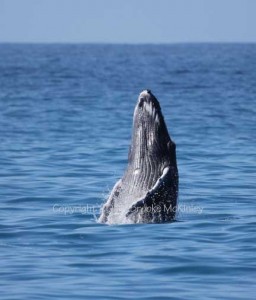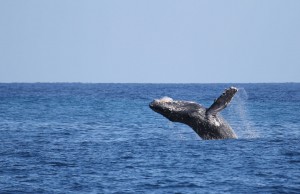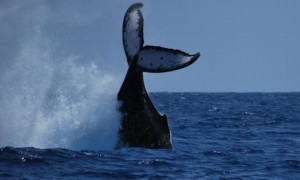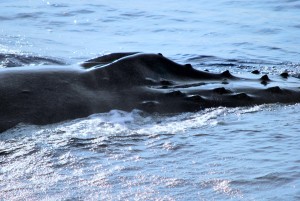Aloha,
 minutes, and then we saw a competitive pod starting up, so we left our Mom and calf and headed out to see what was going on. There were some really aggressive whales in this pod, banging into each other, head lunging and pec slapping. It was difficult to see if there was a female being chased, or if this was just a group of males fighting amongst each other. We were fortunate enough to watch this pod for over an hour before we had to leave them and return to the bay.On the 10:00 Whale Watch from Kawaihae, a Mom/Calf pod spent some time with us, followed by a different Mom/Baby/Escort pod. Baby breached repeatedly (and adorably). And on our Whales and Cocktails Cruise, we also got to watch two different Mom/Calf pods. The first was accompanied by 2 escorts, and the second pod was accompanied by 3 escorts. There was a lot of competition going on between the males in the second group, which got baby excited. That little guy kept breaching and breaching and breaching just about 50 yards from our idling boat.
minutes, and then we saw a competitive pod starting up, so we left our Mom and calf and headed out to see what was going on. There were some really aggressive whales in this pod, banging into each other, head lunging and pec slapping. It was difficult to see if there was a female being chased, or if this was just a group of males fighting amongst each other. We were fortunate enough to watch this pod for over an hour before we had to leave them and return to the bay.On the 10:00 Whale Watch from Kawaihae, a Mom/Calf pod spent some time with us, followed by a different Mom/Baby/Escort pod. Baby breached repeatedly (and adorably). And on our Whales and Cocktails Cruise, we also got to watch two different Mom/Calf pods. The first was accompanied by 2 escorts, and the second pod was accompanied by 3 escorts. There was a lot of competition going on between the males in the second group, which got baby excited. That little guy kept breaching and breaching and breaching just about 50 yards from our idling boat.



